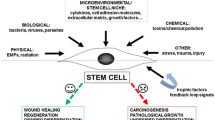Abstract
Osteoarthritis (OA) is a chronic degenerative condition involving the joints caused by metabolic changes in chondrocytes metabolism. Treatment with magnetic fields (EMFs) produces benefits to patients affected by this pathology. The present research has the aim to investigate, by a proteomic approach, the effect of magnetic fields on cultured chondrocytes, because EMFs interferes greatly with OA chondrocytes metabolism. Human osteoarthritic chondrocytes were obtained from the femur head of osteoarthritis adult patients and were cultured under standard conditions and exposed for precise times both to extremely low-frequency (ELF; 100-Hz) electromagnetic fields and to the Therapeutic Application of Musically Modulated Electromagnetic Fields (TAMMEF), which are characterized by variable frequencies, intensities, and wave shapes. We tested the effects of the different exposure by 2-DE analysis and demonstrated that chondrocytes metabolism was highly influenced by the treatment with EMFs; in fact many proteins change their expression after the stimulation, but differently, depending on whether we use ELF or TAMMEF system.

Similar content being viewed by others
References
Aaron RK, Ciombor DM (1992) Electrical stimulation of bone induction and grafting. In: Habal M, Reddi AH (eds) Bone grafts and bone substitutes. W.B. Saunders, Philadelphia, pp 192–205
Albanese A, Battisti E, Vannoni D et al (2009) Alterations in adenylate kinase activity in human PBMCs after in vitro exposure to electromagnetic field: comparison between extremely low frequency electromagnetic field (ELF) and therapeutic application of a musically Modulated electromagnetic field (TAMMEF). J Biomed Biotechnol. Article ID 717941
Bačenková D, Rosochs J, Švihla R, Vaško G, Bodnár J (2001) Repair of knee chondral defectu by a comination of autologus chondrocytes and osteochondral allografts–an animal model. Acta Chir Orthop Traum Cechoslov 68:363–368
Bradford M (1976) A rapid and sensitive method for the quantitation of microgram quantities of protein utilizing the principle of protein-dye binding. Anal Biochem 72:248–254
Chang CH, Loo ST, Liu HL, Fang HW, Lin HY (2010) Can low frequency electromagnetic field help cartilage tissue engineering? J Biomed Mater Res A 92(3):843–851
Ciombor DM, Lester G, Aaron RK, Neame P, Caterson B (2002) Low frequency EMF regulates chondrocytes differentiation and expression of matrix proteins. J Orthop Res 20(1):40–50
Dini L, Abbro L (2005) Bioeffects of moderate-intensity static magnetic fields on cell cultures. Micron 36(3):195–217 (Review)
Gál P, Kilík R, Špaková T et al (2005) He-Ne laser irradiation accelerates inflammatory phase and epithelization of skin wound healing in rats. Biologia 60:691–696
Görg A, Obermaier C, Boguth G et al (2000) The current state of two-dimensional electrophoresis with immobilized pH gradients. Electrophoresis 21(6):1037–1053 (Review)
Jacobson JI, Gorman R, Yamanashi WS, Saxena BJ, Clayton L (2001) Lowamplitude extremely low frequency magnetic fields for the treatment of osteoarthritic knees: a double-blind clinical study. Altern Ther Health Med 7:54–67
Lambrecht S, Dhaenens M, Almqvist F, Verdonk P, Verbruggen G, Deforce D, Elewaut D (2010) Proteome characterization of human articular chondrocytes leads to novel insights in the function of small heat-shock proteins in chondrocyte homeostasis. Osteoarthritis Cartilage 18(3):440–446
Luo Q, Li SS, He C, He H, Yang L, Deng L (2009) Pulse electromagnetic fields effects on serum E2 levels, chondrocytes apoptosis, and matrix metalloproteinase-13 expression in ovariectomized rats. Rheumatol Int 29(8):927–935
Rigato M, Battisti E, Fortunato M, Giordano N (2002) Comparison between the analgesic and therapeutic effects of a musically modulated electromagnetic field (TAMMEF) and those of a 100 Hz electromagnetic field: blind experiment on patients suffering from cervical spondylosis or shoulder periarthritis. J Med Eng Technol 26:253–258
Rosen AD (2003) Mechanism of action of moderate-intensity static magnetic fields on biological systems. Cell Biochem Biophys 39:163–173
Rosocha J, Vaško G, Bačenková D et al (2002) Preliminary clinical experience with the preparation and therapeutic use of autologus osteoblasts chondrocytes. Cell Tissue Banking 3:127–132
Ruiz-Romero C, Blanco FJ (2009) The role of proteomics in osteoarthritis pathogenesis research. Curr Drug Targets 10(6):543–556 (Review)
Santini MT, Rainaldi G, Indovina PL (2009) Cellular effects of extremely low frequency (ELF) electromagnetic fields. Int J Radiat Biol 85(4):294–313 (Review)
Wilmot JJ, Chiego DJ Jr, Carlson DS, Hanks CT, Moskwa JJ (1993) Autoradiographic study of the effects of pulsed electromagnetic fields on bone and cartilage growth in juvenile rats. Arch Oral Biol 38(1):67–74
Wilson R, Belluoccio D, Bateman JF (2008) Proteomic analysis of cartilage proteins. Methods 45(1):22–31 (Review)
Wilson R, Whitelock JM, Bateman JF (2009) Proteomics makes progress in cartilage and arthritis research. Matrix Biol 28(3):121–128 (Review)
Yoshizawa H, Tsuchiya T, Mizoe H et al (2002) No effect of extremely low-frequency magnetic fields observed on cell growth or initial response of cell proliferation in human cancer cell lines. Bioelectromagnetics 23:355–368
Acknowledgments
This work was supported in part by a contribution of the “Fondazione Monte dei Paschi di Siena” Siena Italy.
Author information
Authors and Affiliations
Corresponding author
Rights and permissions
About this article
Cite this article
Albanese, A., Battisti, E., Giordano, N. et al. Biological evidences than human osteoarthritic chondrocytes could be affected by electromagnetic fields with extremely low-frequency or new TAMMEF system. Environmentalist 31, 176–180 (2011). https://doi.org/10.1007/s10669-011-9318-9
Published:
Issue Date:
DOI: https://doi.org/10.1007/s10669-011-9318-9




